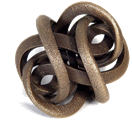Annotation:Laura and Lenza: Difference between revisions
No edit summary |
No edit summary |
||
| Line 2: | Line 2: | ||
---- | ---- | ||
<p><font face="garamond, serif" size="4"> | <p><font face="garamond, serif" size="4"> | ||
'''LAURA & LENZA.''' AKA "Laura et Lenza." English, Country Dance Tune (2/4 time). D Major. Standard tuning (fiddle). AB. '''Laura et Lenza ou, le troubadour''' is the name of a two-act ballet by Charles-Louis Didelot (1767-1837), a dancer and choreographer who danced the part of Lenza, the troubadour hero. He was born in Stockholm of French parents and sent to France at an early age after the King of Sweden took notice of him in a court divertissement. After his tutelage in Paris he removed to London in 1788, and for the next thirteen years performed and choreographed ballets (notably '''Flore and Zephure''', 1796, which featured dancers on wires, imitating weighlessness) in which he appeared with his wife, Marie-Rose Didelot, a ballerina of exceptional talent who won great acclaim in England. The Didelots went to Russia after 1801, where she died in the spring of 1803. He stopped dancing in 1806, partly due to the loss of Rose, and partly due to injuries to his leg, but he taught ballet and remained based in Russia, despite some extended excursions, until his death. | '''LAURA & LENZA.''' AKA "Laura et Lenza." English, Country Dance Tune (2/4 time). D Major. Standard tuning (fiddle). AB. '''Laura et Lenza ou, le troubadour''' is the name of a two-act ballet by Charles-Louis Didelot (1767-1837), a dancer and choreographer who danced the part of Lenza, the troubadour hero. He was born in Stockholm of French parents and sent to France at an early age after the King of Sweden took notice of him in a court divertissement. After his tutelage in Paris he removed to London in 1788, and for the next thirteen years performed and choreographed ballets (notably '''Flore and Zephure''', 1796, which featured dancers on wires, imitating weighlessness) in which he appeared with his wife, Marie-Rose Didelot, a ballerina of exceptional talent who won great acclaim in England. The Didelots went to Russia after 1801, where she died in the spring of 1803. He stopped dancing in 1806, partly due to the loss of Rose, and partly due to injuries to his leg, but he taught ballet and remained based in Russia, despite some extended excursions, until his death. | ||
[[File:didelot.jpg|200px|thumb|right|the Didelots and Madame Parisot]] | |||
<br> | <br> | ||
<br> | <br> | ||
Revision as of 01:20, 20 October 2012
Back to Laura and Lenza
LAURA & LENZA. AKA "Laura et Lenza." English, Country Dance Tune (2/4 time). D Major. Standard tuning (fiddle). AB. Laura et Lenza ou, le troubadour is the name of a two-act ballet by Charles-Louis Didelot (1767-1837), a dancer and choreographer who danced the part of Lenza, the troubadour hero. He was born in Stockholm of French parents and sent to France at an early age after the King of Sweden took notice of him in a court divertissement. After his tutelage in Paris he removed to London in 1788, and for the next thirteen years performed and choreographed ballets (notably Flore and Zephure, 1796, which featured dancers on wires, imitating weighlessness) in which he appeared with his wife, Marie-Rose Didelot, a ballerina of exceptional talent who won great acclaim in England. The Didelots went to Russia after 1801, where she died in the spring of 1803. He stopped dancing in 1806, partly due to the loss of Rose, and partly due to injuries to his leg, but he taught ballet and remained based in Russia, despite some extended excursions, until his death.

Source for notated version:
Printed sources: Wilson (A Companion to the Ball Room), 1816, p. 120.
Recorded sources:
Back to Laura and Lenza
